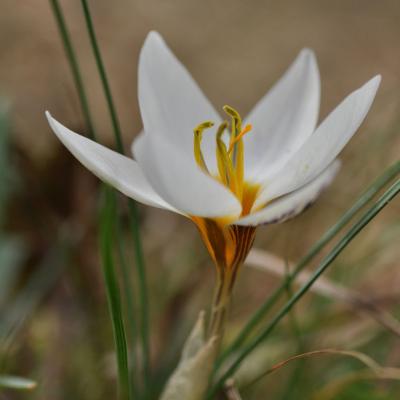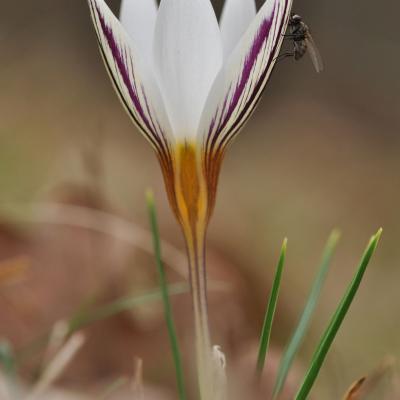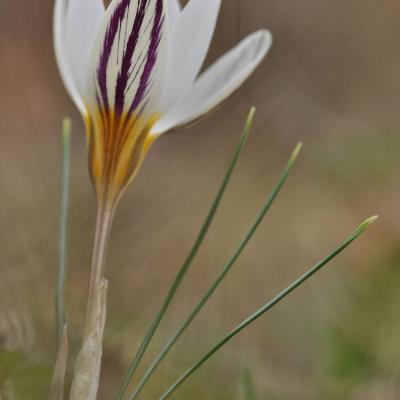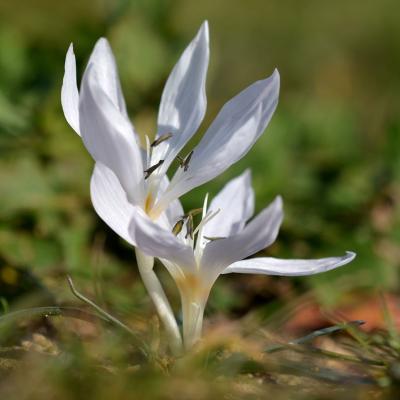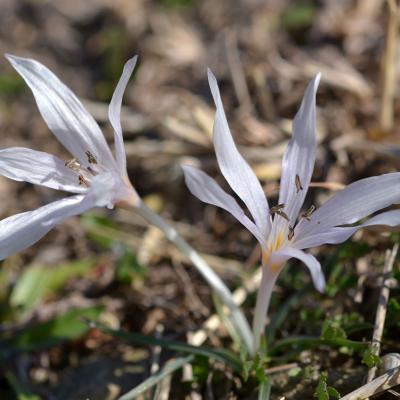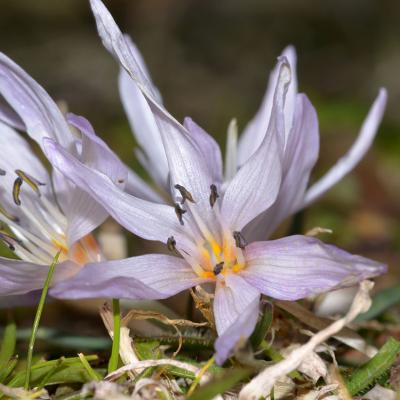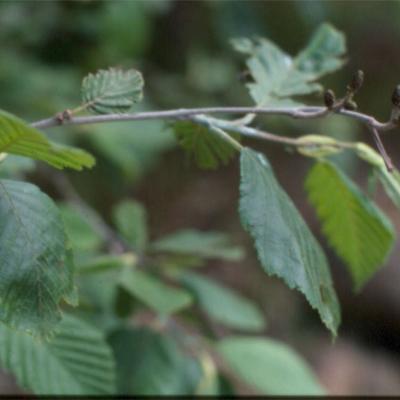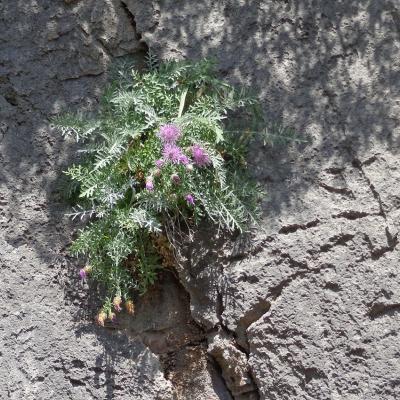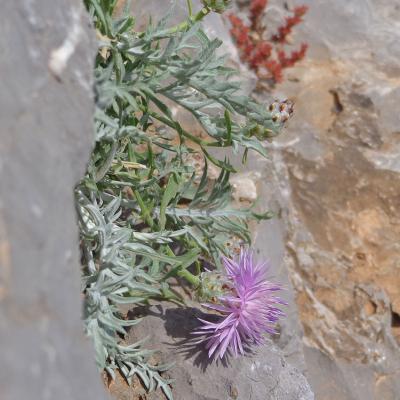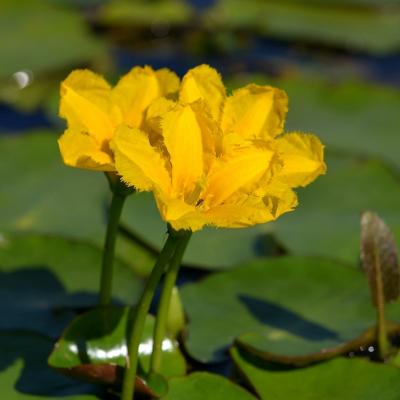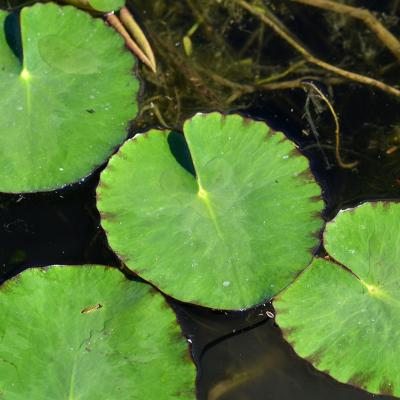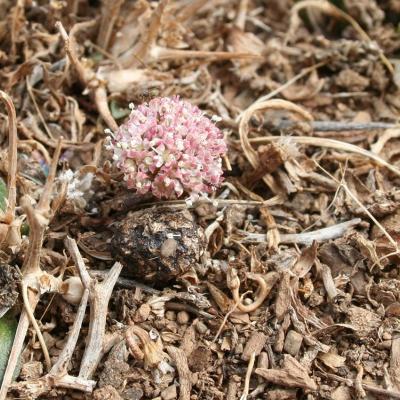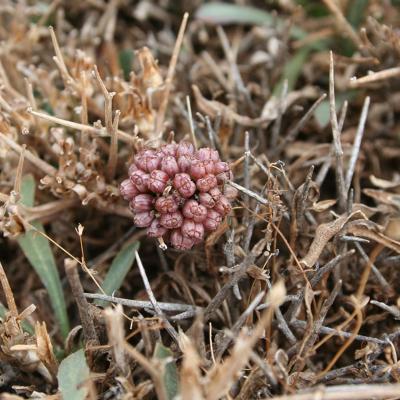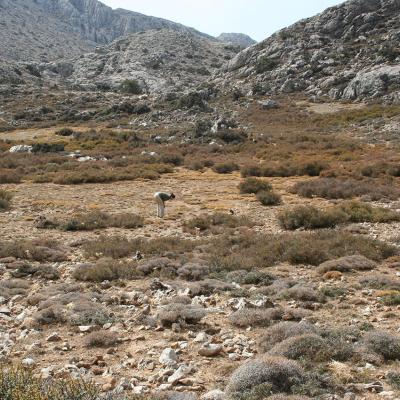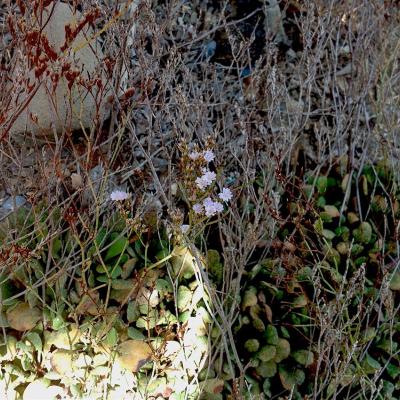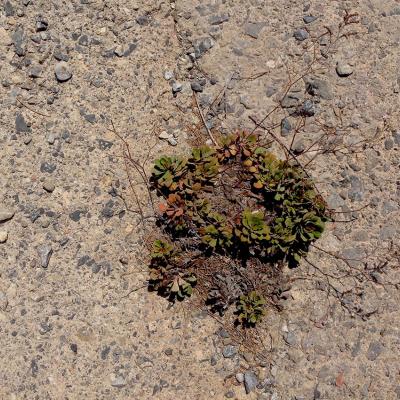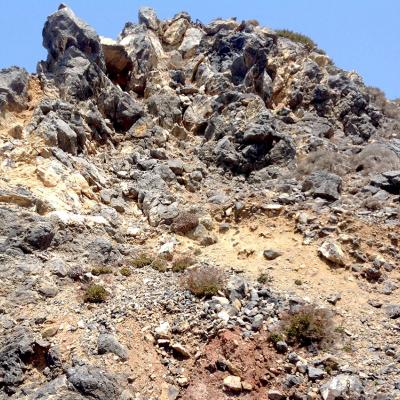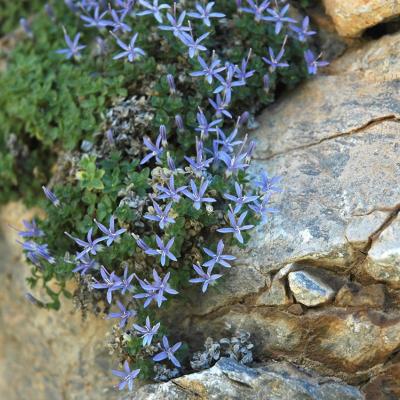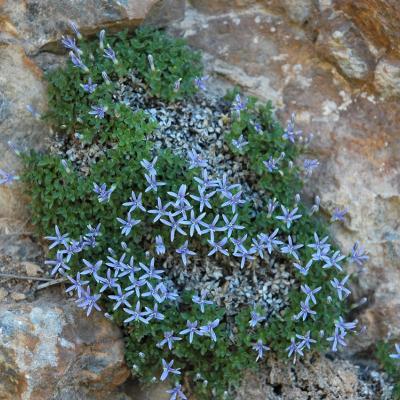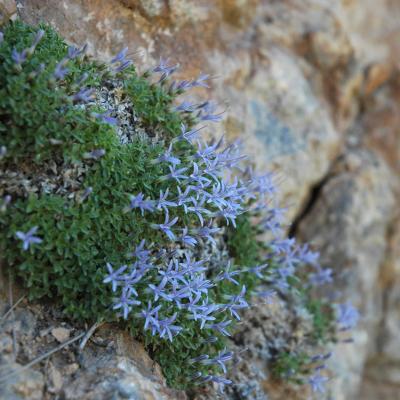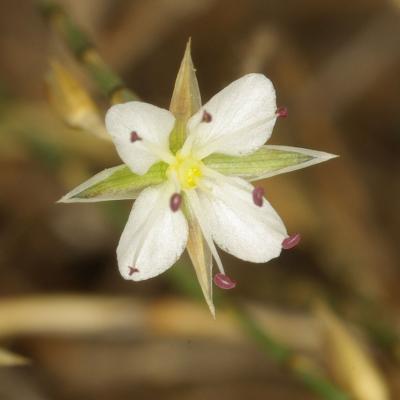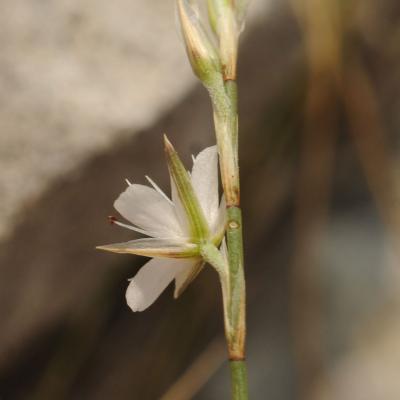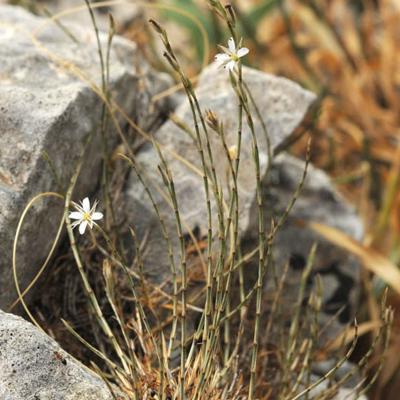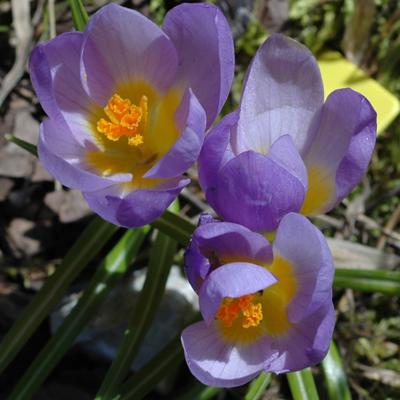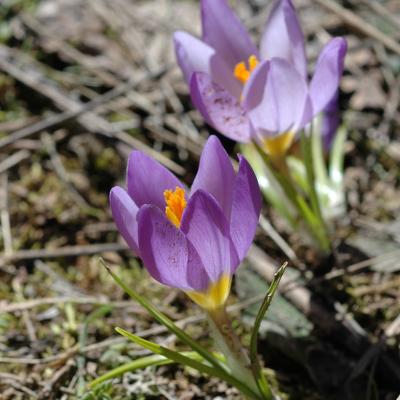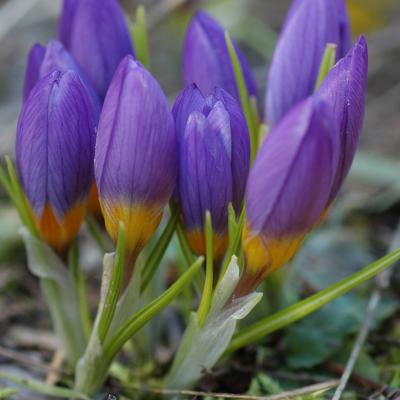Plant of the month
Crocus biflorus subsp. stridii is a fairly rare species, Greek endemic, known so far only from the prefectures of Thessaloniki and Xanthi. Its fragrant flowers, of white or purple color, with dark stripes on all three tepala, coupled with the rarity, make it very attractive for collectors, so it is included in the Red Data Book of 1995 with the designation "Vulnerable".
This subspecies flowers with 5-8 leaves during January and February. It grows in open grassy or sandy places, at an altitude of 30-800 m.
Colchicum chimonanthum K. Perss., as all other members of the genus Colchicum, is a geophyte with flowers protruding a few centimeters above ground surface. As its name implies, it flowers during winter, from December to February. Its tepals are white or have a subtle pink-violet hue. Among them, the stamens with the characteristic golden yellow base stick out. It grows in slopes with low herbaceous vegetation or sparse shrubs. It is a local endemic of the prefecture of Macedonia, firstly described as a separate species in 1999.
Deciduous tree or shrub up to 25 m. The species is widespread in Europe, from Scandinavia and northern Russia to Central Europe and the Balkan Peninsula. In Greece, the geographical range is limited to W Rodopi, where it occurs in five localities, at an altitude of over 1,000 m. The species usually grows along streams in moist areas, rich in nutrients. The area of occupancy of the subspecies in Greece is relatively small, <2,000 km2, mainly because of the specialized habitat that it occurs.
Centaurea heldreichii is a perennial, chasmophytic, local endemic species of Western Greece. It is a species of Annexes ΙΙ and IV of the Directive 92/43/ΕU under priority for protection and it is considered as Critically Endangered (CR), because of its limited geographical distribution that does not exceeding 10 km2 according to IUCN RED LIST of Threatened Species (IUCN 2012) and the European Red List of Vascular Plants. It is included in the Red Data Book of Rare and Endangered Plants of Greece (2009) and Annex Ι of the Bern Convention.
Nymphoides peltata (S. G. Gmel.) Kuntze is an aquatic macrophyte, which roots at the bottom of lakes, swamps and slow-moving rivers. Its long flexible stems allow its circular-cordate leaves with undulate margins to spread on the water surface, while its yellow-petaled flowers emerge a few centimeters above it. It is a Eurasian species that in Greece is spread in Northern and Southern Pindos, Sterea Hellas, North-Central and North-Eastern floristic regions.
Horstrissea dolinicola is a perennial herb; most of the plant grows underground. Its cylindrical root can be as long as 10 cm, whereas its leaves and inflorescences barely exceed 2-3 cm in height. This species was first described in 1990 and it is the only one belonging to the genus Horstrissea. It occurs only on Mt. Ida (Psiloritis mountain range) in central Crete at about 1500 m altitude, where it grows in a few limestone sinks (dolines). Its total population counts just a few dozen individuals in an area of about 3,000 m2.
Limonium aphroditae occurs only in the small coast Limnaria of West Kythira. It manages to survive even through the concrete of the small port that has been built there. The few individuals of the single population of the species have led to its characterisation as endangered. The professors R. Artellari and O. Gerogiou, who described it as new species, gave the name of the goddess Aphrodite, who was born in Kythira.
Campanula asperuloides is a perennial species, forming dense, cushion-shaped clusters. The species is local endemic to the Peloponnese, where it occurs in five mountains (Chelmos, Taygetos, Parnon, Koulochera, Kyllini) and Evrostini area. It grows on limestone rocks and crevices, at altitudes 400-1700 m. Flowering takes place from June to August.
Endemic species of Greece. Perennial but delicate plant, usually up to 7 cm, flowering stems with a characteristic "articulated" appearance, usually arcuate. The flower is white with 4 sepals and 4 slightly shorter petals. It grows both on limestone and ophiolite substrates at altitudes 5 - 2100 m. Flowering takes place from June to August, depending on the altitude.
C. nivalis is a Balkan species, growing mainly in grasslands and scrubs (from 400 to 2800 m) in Greece, Yugoslavia, Bulgaria and Albania. This rather short geophyte is easily recognized by its purple flowers with the yellow throat, as well as the rather wide synanthus leaves, with the typical, for the genus, median pale stripe.

